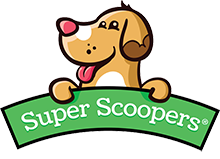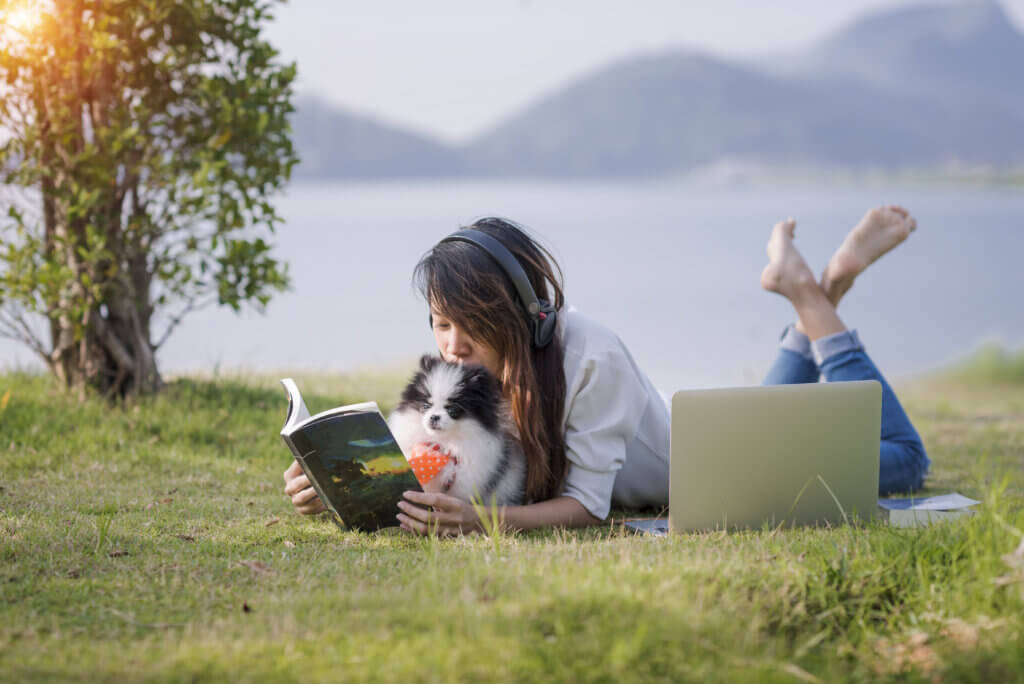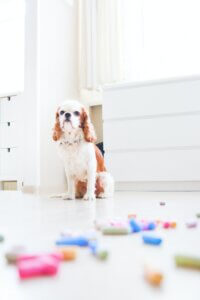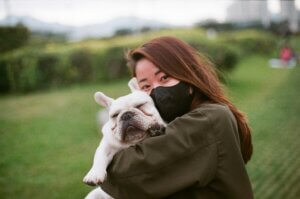Recognize the Signs of Anxiety in Dogs for Holiday Traveling

As you prepare to travel this holiday season, it’s important to look for signs of anxiety in dogs. Just like humans, dogs can feel anxious – especially when facing new things. The problem is that sometimes the signs of anxiety in dogs look like other issues, such as an upset stomach or poor behavior. Once you learn how to identify the symptoms, you’ll do a much better job of helping your dog stay calm even while traveling.
The Different Causes of Anxiety in Dogs
The first thing dog owners need to know is that there are different causes of anxiety in dogs.
- Separation Anxiety – According to the American Kennel Club, 14% of dogs suffer from separation anxiety, which may explain why it is the one you are most familiar with. Essentially, these dogs become anxious when they are separated from their family members, such as when you go to work. Unfortunately, the signs of anxiety in dogs resulting from separation are not pleasant. Their behaviors typically include making messes in the home when left alone (peeing or pooping in the home), destroying home goods, and excessive barking.
- Fear – Fear-based anxiety occurs when the dog encounters an object, sound, or situation that causes fear, such as fireworks, thunderstorms, and other loud noises. Additionally, dogs learn to associate the companionable sounds of storms, such as rain and wind, with the scary event. That’s why some signs of anxiety in dogs even appear if they merely sense a storm is on the way.
- Changes in Environment – According to ABC Everyday, “Less common forms of anxiety can involve changes in environment, such as going to the vet, in the car or moving house.” It also includes holiday traveling (whether they travel with their owners or are boarded).
The Signs of Anxiety in Dogs
If you are planning to do any traveling over the holidays, be on the lookout for the following signs of anxiety in dogs from AKC.
- Aggression
- Urinating or defecating in the house
- Drooling
- Panting
- Destructive behavior
- Depression
- Excessive barking
- Pacing
- Restlessness
- Repetitive or compulsive behaviors
Just like humans, it is normal to anxious on occasion; however, it becomes a problem when the behaviors become routine. For instance, if your dog showcases his anxiety with aggression, it’s a problem.
Tips for Treating Your Dog’s Anxiety
The good news is that there are many ways to treat your dog’s anxiety. If your pup is showing signs of anxiety, speak with your veterinarian. Not only will your veterinarian provide advice on how to ease his anxiety, but your vet will also help you identify possible triggers.
Your veterinarian may recommend a combination of the following treatments for dog anxiety.
- Behavior Training – Ideally, the best way to address your dog’s anxiety is to deal with the cause directly. This requires behavior training. For example, try to replace your dog’s negative associations with positive ones. AKC recommends, “The owner slowly introduces the dog to the source of anxiety, preferably in small doses and at a decreased intensity. Repeated exposure and rewarding positive behavior can go a long way toward managing anxiety.”
- Medication – Yes, your pup may be prescribed medication for anxiety. However, this is a medicine used to treat this condition in dogs, so you should not try to ease holiday travel anxiety by making him sleepy with Benadryl. Instead, speak with your veterinarian, who may prescribe a dog-friendly anti-anxiety medication.
- Pheromones – If you prefer to avoid medication, you can try the natural route with dog appeasing pheromones. Rover explains, “Nursing dogs, for example, release a special kind of comforting pheromone to let their offspring know they are safe—and that’s exactly the pheromone that’s effective in calming an anxious dog. This pheromone, termed dog appeasing pheromone (DAP), has been produced synthetically. The synthetic version is available in several formats, including room diffusers, spray, edible treats, and wearable collars.”
- Other Boarding Options – If your dog becomes anxious on visits to the vet, it might not be the best idea to board him there over the holidays. Instead, look for stress-free boarding options. [Related Read: 7 Alternatives to Dog Boarding Facilities This Holiday Season]
- ThunderShirt – You might have already heard of the popular ThunderShirt designed to ease dog’s anxiety from thunderstorms. Many dog owners claim this type of anxiety vest works. VCA Hospital explains, “When worn properly, anxiety wraps distribute pressure over the back and sides of the dog’s chest, serving as a calming ‘hug.’ Scientifically, gentle pressure releases chemicals called endorphins that promote a sense of well-being.”
- Pack Comfort Items – Whether your four-legged family member is joining you on your holiday travels or you are taking him to a friend’s home, be sure to pack his comfort items. Items with scents your dog recognizes, such as blankets and stuffed dog toys, will be comforting and soothing.
- Cuddle and Comfort – If your dog runs into your arms during a thunderstorm, it is perfectly acceptable to comfort and cuddle him. He’s your fur-baby, so treat him like one.
At Super Scoopers, we’ve seen our fair share of anxious dogs when we visit homes to scoop their poop (we get it – they’re just protecting their space and family). But that doesn’t make us experts on treating anxiety. For treatment plans, contact your veterinarian. For yard scooping, contact us.




